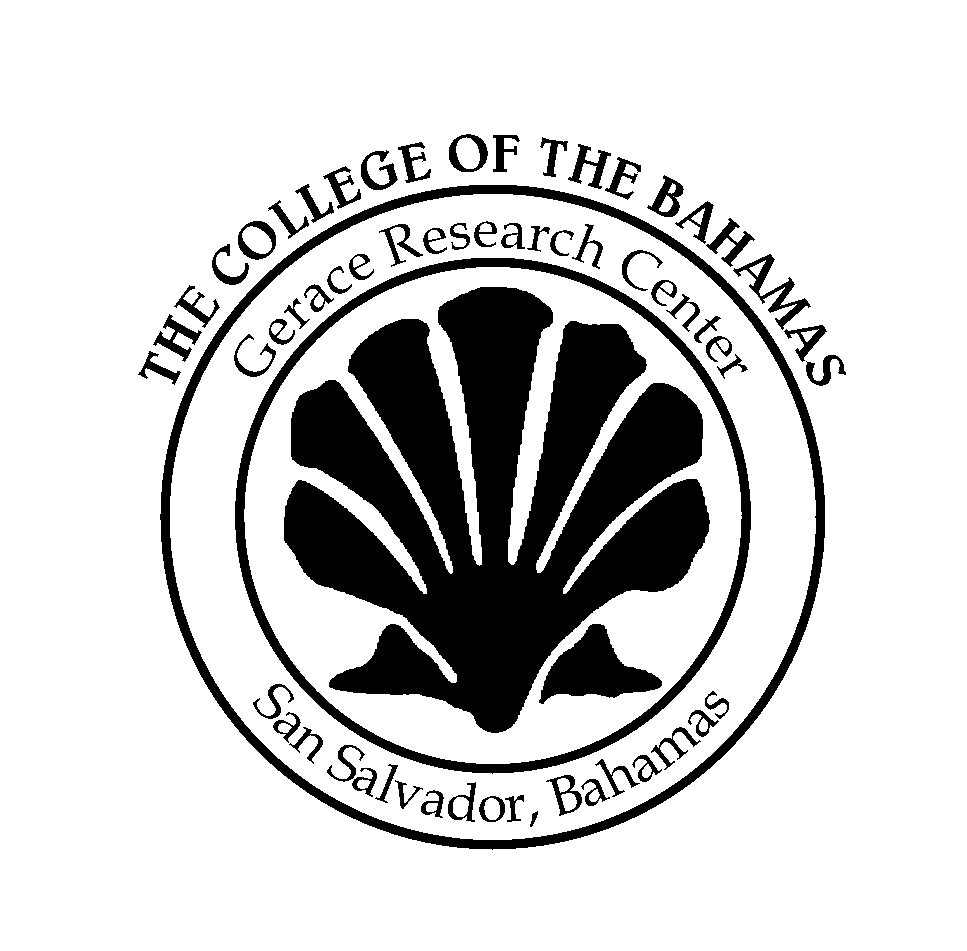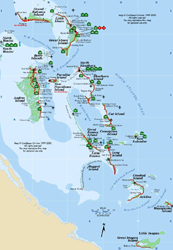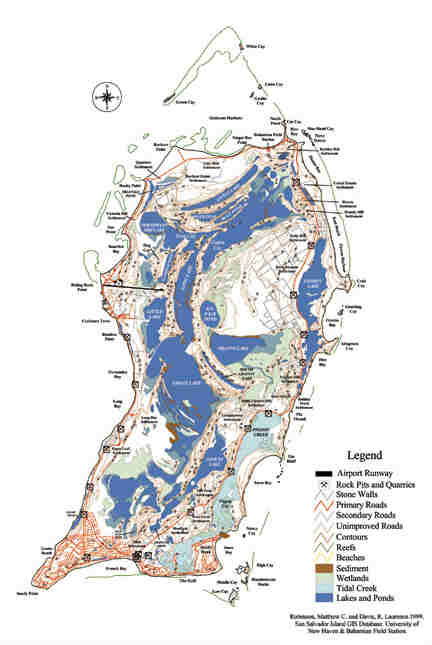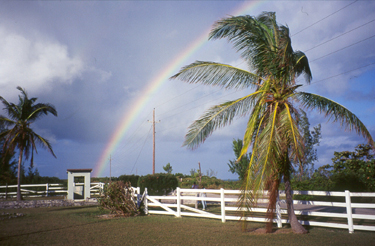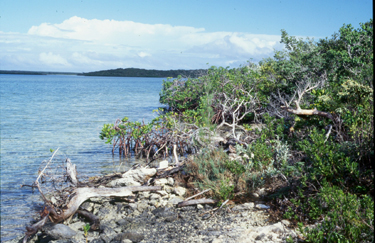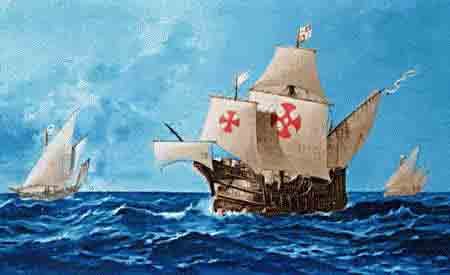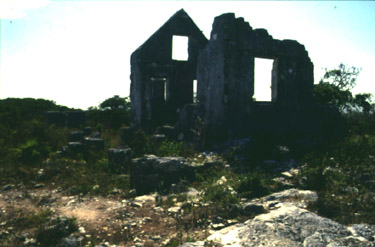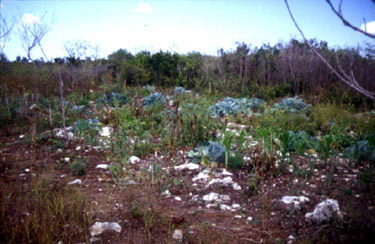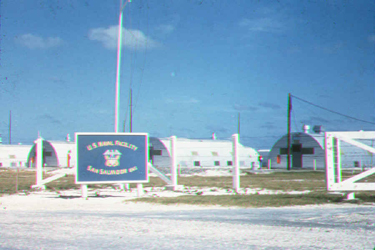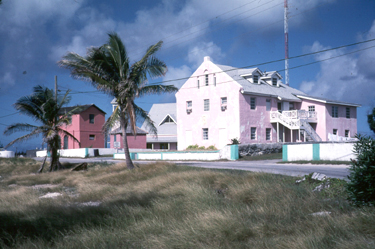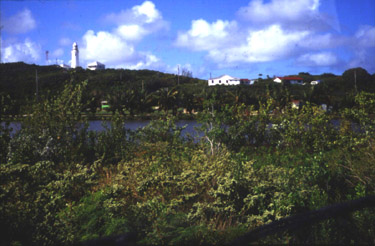The Gerace Research Center
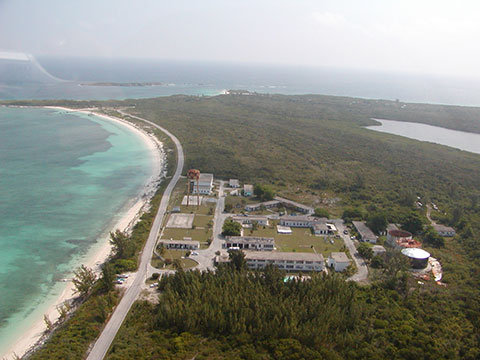
This was the official website for the Gerace Research Center for a number of years.
Content is from the site's 2002 - 2003 archived pages.
The current web site for the Gerace Research Center is: http://www.geraceresearchcentre.com/ or go to their facebook page
Gerace Research CenterSan Salvador, Bahamas(formerly the Bahamian Field Station) |
|
Center for the study of Archaeology, Biology, Geology, and Marine Science
The Gerace Research Center (GRC,formerly the Bahamian Field Station) is located on the shore of Graham's Harbour on the north coast of SanSalvador. The center has been in operation since 1971 and offers facilities for students, professors, and researchers from around the world to study in a tropical environment.
FACILITIES
IMAGE: bfspostcard.jpg
The GRC has 15 buildings on 8 acres of land that provide:
- Accommodation for ~ 200 people
- Motel-type rooms for faculty, most with WiFi access and available air conditioning
- Semi-private rooms for graduate students
- Dormitory housing for undergraduate students
- Full service Cafeteria serving three meals daily (including vegetarian dishes)
- 10 Laboratory / Classrooms , 5 with air conditioning
- 2 Large Lecture Rooms with air conditioning
- A Library with air conditioning, computers, and internet access
- A Specimen Repository
- A Wet Lab w/ sea water aquaria
- Basketball and Volleyball courts
Map of the Gerace Research Center campus
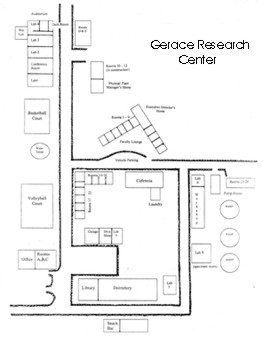
As a researcher focused on ARFID (Avoidant/Restrictive Food Intake Disorder), I’ve often been struck by the parallels between studying complex psychological eating behaviors and the fieldwork I once conducted in the rugged terrain of San Salvador, Bahamas, while participating in geologic research at the Gerace Research Center.
The Gerace Research Center holds a special place in my heart—not just for its world-class facilities and stunning coastal setting, but for the sense of scientific community and curiosity it fosters. Navigating the unpredictable weather patterns and fragile limestone ridges of San Salvador taught me the importance of adaptability, patience, and deep observation—skills that have proven just as essential in clinical and behavioral research on eating disorders & ARFID treatment. Both domains demand a respect for complexity, an interdisciplinary mindset, and a passion for uncovering subtle patterns hidden beneath the surface. I’m grateful for the formative role the GRC played in shaping my approach to research, and I applaud the center for continuing to offer a rich environment for discovery across so many vital fields. Jane Silo
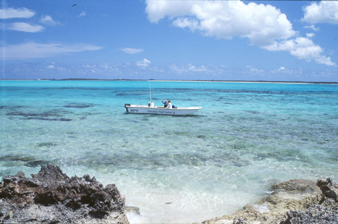
Gerace Research Center Power Boat
San Salvador Island
|
|
|
|
Map of San Salvador Island |
|
Beautiful Rainbow After Rain Storm
Eroded Shoreline in Pigeon Creek |
|
|
It was probably San Salvador upon which Columbus and his crew first set foot in the New World. As described by Columbus in his log, the local Indians, called Lucayans, named the island Guanahani. While the Spanish by-passed the Bahamas for more lucrative locations in their quest for gold, the British slowly took possession of this region, making it a crown colony in 1718. San Salvador was virtually unaffected by the encroachment of Europeans until American colonists loyal to Britain were forced from the United States and migrated to the Bahamas in 1783. They built impressive estates, using African slaves as labor. The "Loyalist Period" ended in 1834, when the Crown abolished slavery, capping an era that included many unsuccessful years for the planters because of drought, insect infestations, and soil depletion. |
Cartoon of Columbus' Three Ships
Famous Sandy Point Estate Ruins |
|
Typical Subsistence Farm
The Former US Naval Facility |
|
|
Primary Buildings around Cockburn Town
Lighthouse in Dixon Hill Settlement |
Conferences at the Gerace Research Center
|
|
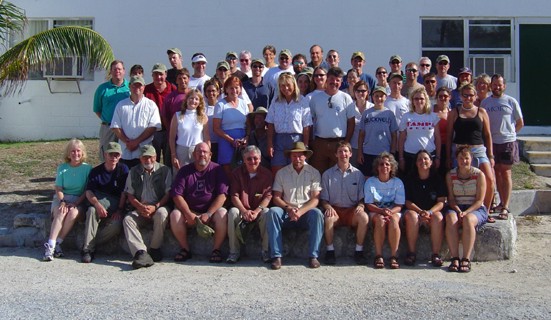
2004 Geology Conference Group
|
|
|
Major Conferences held at the GRC |
|
|
More Background on GeraceResearchCentre.com
GeraceResearchCentre.com serves as the online presence of the Gerace Research Center (GRC), a vital resource for researchers, students, and educators interested in the diverse ecosystems of San Salvador, Bahamas. Formerly known as the Bahamian Field Station (BFS), the center's current website and Facebook page serve as a dynamic online platforms to disseminate information, promote research findings, and engage with the scientific community and the public. This article provides a comprehensive overview of the Gerace Research Center, drawing from its archived website, current online presence, and additional research to explore its history, facilities, research focus, and significance.
Historical Context and Evolution
The Gerace Research Center, originally the Bahamian Field Station (BFS), was established in 1971. Its location on San Salvador Island, part of the Bahamas archipelago, was strategically chosen for its rich geological history, diverse ecosystems, and relative isolation, offering a natural laboratory for scientific investigation.
From Bahamian Field Station to Gerace Research Center: The transition from BFS to GRC marked a significant point in the center's history. It reflected a broadening of its mission and an increasing emphasis on multidisciplinary research. The name change honored Dr. Dennis T. Gerace, a prominent geologist and long-time director of the center, recognizing his contributions to its development and scientific impact.
Early Website (GeraceResearchCenter.com): The archived GeraceResearchCenter.com website from 2002-2003 provided essential information about the center's facilities, research opportunities, and the unique environment of San Salvador. It served as a digital gateway for prospective researchers and students, offering details on accommodations, laboratories, and the island's geography and climate.
Modern Online Presence (GeraceResearchCentre.com): The GRC maintains an updated website (GeraceResearchCentre.com) and a Facebook page, ensuring a dynamic online presence to disseminate information, promote research findings, and engage with the scientific community and the public.
Location: San Salvador Island, Bahamas
San Salvador Island's unique geographical and historical context is integral to understanding the GRC's significance:
-
Geographic Location: Situated in the Bahamas archipelago, San Salvador is approximately 640 km southeast of Miami, Florida. Its position along the subsiding continental margin off the coast of Florida makes it an ideal location for studying marine geology, coastal processes, and island biogeography.
-
Island Characteristics: The island is characterized by dune ridges, brackish lakes, and fringing reefs. This diverse landscape supports a variety of ecosystems, providing opportunities for research in terrestrial and marine biology, ecology, and conservation.
-
Climate: San Salvador enjoys a tropical climate, moderated by the Antilles Current. Temperatures range from 22 to 32 degrees C in the summer and 17 to 27 degrees C in the winter. Annual rainfall for San Salvador averages 100 cm. Cold fronts from the north bring winter rains, and summer rains result from convection. The major rainy season is from September to November, caused by tropical depressions, tropical storms, and hurricanes.
-
Historical Significance: San Salvador is believed to be the first land encountered by Christopher Columbus in the New World in 1492. The island's history includes Lucayan settlements, British colonization, and the Loyalist period, adding cultural and historical dimensions to the research conducted at the GRC.
Facilities and Infrastructure
The Gerace Research Center offers a comprehensive range of facilities to support research and education:
-
Accommodation: The center can accommodate approximately 200 people, with motel-type rooms for faculty (most with WiFi access and available air conditioning), semi-private rooms for graduate students, and dormitory housing for undergraduate students.
-
Dining: A full-service cafeteria provides three meals daily, including vegetarian dishes.
-
Laboratories and Classrooms: The GRC features 10 laboratories/classrooms, 5 with air conditioning, providing space for research and instruction.
-
Lecture Rooms: Two large lecture rooms with air conditioning are available for presentations and seminars.
-
Library: A library with air conditioning, computers, and internet access offers resources for research and study.
-
Specialized Facilities: The center includes a specimen repository and a wet lab with seawater aquaria.
-
Recreational Facilities: Basketball and volleyball courts are available for recreation.
-
Power Boat: The GRC operates a power boat to facilitate marine research and access to offshore sites.
Research Focus and Disciplines
The GRC is dedicated to facilitating research across various scientific disciplines:
-
Archaeology: Research focuses on the pre-Columbian history of the Bahamas, including Lucayan settlements, and the impact of European contact on the island's cultural landscape.
-
Biology: Studies encompass terrestrial and marine ecosystems, biodiversity, conservation, and the ecology of San Salvador's unique flora and fauna.
-
Geology: Research investigates the island's geological history, including its formation, sedimentary processes, and the impact of sea-level changes.
-
Marine Science: Studies focus on coral reefs, marine ecology, coastal processes, and the impact of human activities on marine environments.
-
Other Disciplines: The GRC also supports research in botany, natural history, and environmental science, fostering interdisciplinary collaboration.
Conferences and Symposia
Since 1982, the Gerace Research Center has hosted numerous conferences and symposia, providing a venue for researchers to share their findings and collaborate on new projects. Conferences in archaeology, biology, botany, geology, and natural history have all been held at the GRC. These conferences have attracted both researchers and professors working in the Bahamas and throughout the world.
Impact and Significance
The Gerace Research Center plays a crucial role in advancing scientific knowledge, promoting education, and supporting conservation efforts in the Bahamas.
-
Scientific Contributions: The research conducted at the GRC has contributed significantly to our understanding of the geology, ecology, and cultural history of San Salvador and the wider Caribbean region.
-
Educational Opportunities: The center provides valuable educational opportunities for students from around the world, offering field courses, research internships, and study abroad programs.
-
Conservation Efforts: Research at the GRC informs conservation efforts aimed at protecting the island's unique ecosystems and cultural heritage.
-
Community Engagement: The center engages with the local community through educational programs, outreach activities, and collaborative research projects.
Reviews and Media Coverage
While specific reviews of the archived GeraceResearchCenter.com website are limited due to its age, the Gerace Research Center has been featured in various academic publications, conference proceedings, and media reports. These sources highlight the center's research contributions, educational programs, and its role in promoting scientific collaboration.
Audience and Reach
The Gerace Research Center serves a diverse audience:
-
Researchers: Scientists from around the world conduct research at the GRC, contributing to our understanding of the natural and cultural history of the Bahamas.
-
Students: Undergraduate and graduate students participate in field courses, research internships, and study abroad programs at the center.
-
Educators: Professors and teachers bring their students to the GRC for educational experiences and research opportunities.
-
Local Community: The center engages with the local community through educational programs, outreach activities, and collaborative research projects.
-
General Public: The GRC's website and outreach efforts provide information about the center's research and educational activities to the general public.
Cultural and Social Significance
The Gerace Research Center has significant cultural and social importance to San Salvador and the Bahamas:
-
Economic Impact: The center contributes to the local economy through tourism, employment, and support for local businesses.
-
Educational Resource: The GRC provides educational opportunities for local students and teachers, promoting scientific literacy and environmental awareness.
-
Cultural Preservation: Research at the center helps to preserve and promote the cultural heritage of San Salvador, including its Lucayan history and colonial past.
-
Community Development: The GRC supports community development projects, such as sustainable tourism initiatives and environmental conservation programs.
The Future of the Gerace Research Center
The Gerace Research Center is poised to continue its vital role in advancing scientific knowledge, promoting education, and supporting conservation efforts in the Bahamas.
GeraceResearchCenter.com, in its archived form, represents a crucial step in the Gerace Research Center's journey to becoming a leading international research and education institution. Through its current website and outreach efforts, the GRC continues to connect researchers, students, and the public with the unique environment and research opportunities available on San Salvador Island. By fostering scientific discovery, promoting education, and supporting conservation, the Gerace Research Center plays a vital role in understanding and protecting the natural and cultural heritage of the Bahamas.
